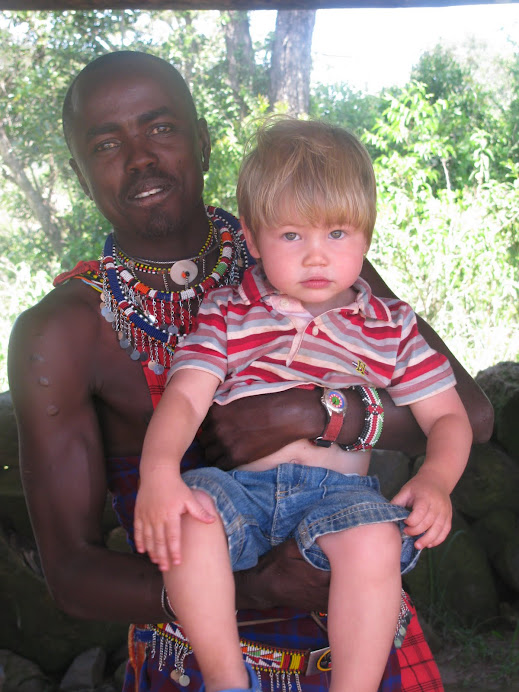Welcome to that magical time of day in East Africa, late afternoon/early evening, when the heat comes alive the way we most associate with the middle of the day. It is stark and welcome and direct. I am sitting on the poolside patio of the elegant Ol Donyo Waus in the Chyulus, a conservation-minded lodge that does posh with a purpose. Here, linen, stone and wood seem to fold around you, and elephants appear to be within grasp at the watering hole below the golden flagstone terrace. The lodge nestles in the lap of a former volcanic range, looking out on nearly 300,000 acres of golden grass plains, the Twin Hills or Mau in Maasai (perfect reflections of one another, they are so proportional), and Mt. Kilimanjaro in the far distance, surrounded by marshmallow clouds in a grey-blue sky.
In contrast, I'm staying behind this sumptuous property at my friend Elena’s very basic camp (hello, sinkless) with her crew as they complete wildlife filming on THE LION WARRIORS OF KILIMANJARO. A Norwegian/Californian filmmaker who’s as gutsy as she is gifted, Elena invited me down to immerse myself in background research on what’s happening between the Maasai and lions in the Amboseli-Tsavo ecosystem.
The two “tribes” are at a very emotional juncture. For the first time, young initiates, who’ve just been circumcised and are training to become warriors, are not killing lions as part of the ritual. By embracing this new tradition (and there is significant resistance), the Maasai are now facing another tough dilemma. What do they do about lions in a severe, post-drought environment where their former four-legged trophies attack their manyattas?
These predators are killing prized cattle and shoats (sheep and goats) instead of their normal fare of wildebeest and zebra whose populations have dwindled considerably. How can the Maasai not turn back the clocks and start hunting the most famous of the big cats again? Which takes precedence -- conserving wildlife at potentially huge personal expense to the locals or preserving a way of life at all costs? Are they truly able to live side by side so that both parties can thrive?
Today I am caught full throttle in the middle of this duality. In pursuit of a kind of natural justice, Joseph leads the way. He is quintessentially tall, dark and handsome, a young warrior with long black lashes and a graceful bearing. He also works as a scout for the Maasailand Preservation Trust (MPT) in order to prevent lion killers from having their way. Joseph believes that the approximately 30 big cats left in the surrounding group ranches should be protected and spared. Many agree; some don’t.
TO BE CONTINUED…
Thursday, June 24, 2010
Subscribe to:
Post Comments (Atom)










No comments:
Post a Comment